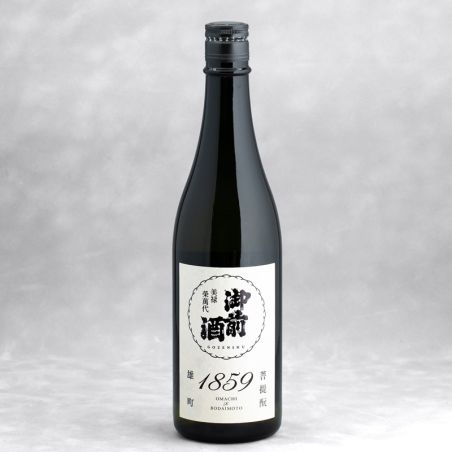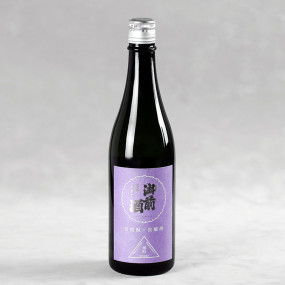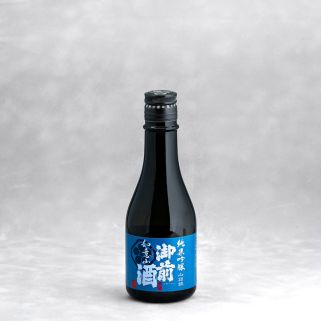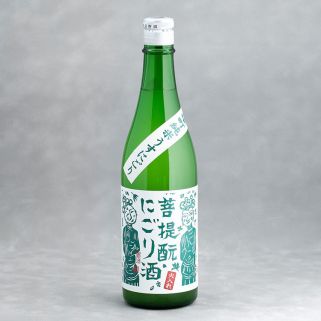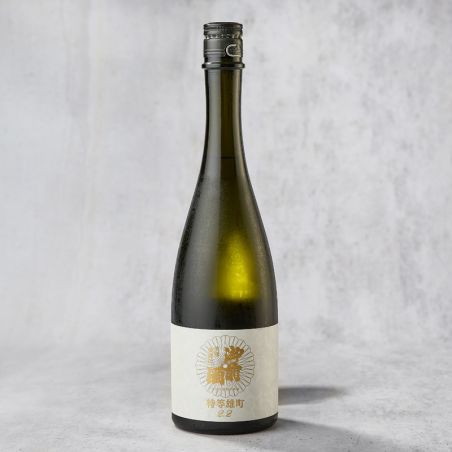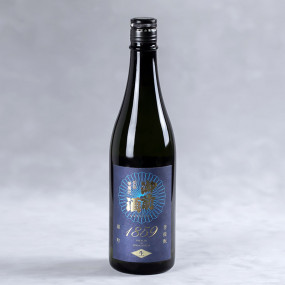Brand's products TSUJI HONTEN
Gozenshu Brewery (Tsuji Honten Co., Ltd.) was founded in 1804 in Katsuyama, Maniwa-shi City, Okayama Prefecture, by Yahei Tsuji, a merchant who turned sake-making. From its inception, the company was chosen to supply the household of Lord Miura, the Daimyo (Lord) of the province. His sakes then take the name of "Gozenshu" - sake dedicated to the Lord. Sake was also popular with locals under the brand name "Manetsu".
Katsuyama is located in the Mimasaka region (old name for northern Okayama), long known as "Umasake no Kuni" (literally translated as "the land of beautiful sake"). With its cold climate coupled with fine groundwater and good rice for sake, Katsuyama provides an ideal environment for making sake. Indeed, these regional advantages have helped forge Gozenshu's motto: "Be responsible for making the best sake with local rice, water and genuine local craftsmanship." Over the generations, the philosophy has always inspired brewers to strive to make the best sake without any compromise. Gozenshu sake embodies a clean taste unlike the sake produced in the southern part of Okayama. While southern sake tastes relatively sweet, the crisp taste of Gozenshu is what local drinkers have been asking for, in large part because of the cold winters they have to endure. At Gozenshu, they have been eager to make junmai sake for over four decades, long before the recent junmai fashion emerged. It's safe to say that junmai makes up about 70% of all of their products. In recent years, the brewing has been run by Okayama's first female Tôji, Master Brewer, Maiko Tsuji (7th generation of the family) who inherited the post from her mentor Takumi Harada after his death in 2007 (Japan does not have to date that 20 Tôji women out of 1200 Tôji). Harada was a fine master, famous, who had worked for Gozenshu for over 40 years. With Tsuji at the helm of his team of young brewers, Gozenshu Brewery has been revitalized and continues to dedicate itself to the art of sake making. The Tsuji family was also keen to pursue cultural activities during the Meiji and Showa periods. Since the heads of households at the time were so-called culture lovers, their brewery was visited by famous artists and writers such as Tekkan and Akiko Yosano (author / poet), Saishu Onoe (poet / chirographer), Hekidoto Kawahigashi (poet / essayist) to name a few. Separately, a giant of Japanese literature, Junichiro Tanizaki (also passionate about sake) wrote one of his major novels, The Makioka Sisters, while he was evacuated to Katsuyama during World War II. His temporary residence remains to this day and continues to attract visitors to the city. In the recent past, the list of those who have affectionately visited this brewery includes Tatsuya Naramoto (historian), Yasaburo Ikeda (scholar), Kiyoshi Atsumi (actor) and Rokusuke Ei (lyricist). “Cultural exchange through the best sake” is precisely what the story of Gozenshu consists of. Everything was made possible thanks to the sincere dedication of their ancestors who conveyed the true art of sake making and its culture.
Finally, it is necessary to remember two major points concerning the Tsuji family: they are at the origin of the rebirth of the Bodaimoto method for the preparation of the starter and Tsuji Honten will be in the coming months the only brewery not to be only make nihonshu from one and the same rice, the omachi. The Bodaimoto method had disappeared 4 centuries ago with the advent of the Kimoto method. In the days of the Bodaïmoto method, sake brewers made their patties all year round, which frequently negatively impacted the stability of the sake. The Kimoto method has favored the manufacture of sake in winter, thus guaranteeing very good stability to the brewed drink. The Bodaimoto Method was rediscovered in 1980, in an ancient Japanese book, "Nihon Sankaimeisan Zue" (Japanese Sake Making Method) unearthed in England by antique dealer Mike Deen, uncle by marriage of the current President of Tsuji Honten.
This sake was awarded by the silver medal at the prestigious International Wine Challenge. Setting the standard of excellence, Gozenshu Junmai Daiginjo “Kei”...
This Gonzehsu sake , made from 50% polished Tougai Omachi rice , has a distinct sweetness and ginjo aroma. Freshness and elegance on the palate will certainly be...
Gozenshu 1859, a sake that marks the transition in the manufacture of sake by the Tsuji Honten house. Being creative and innovative is essential to meet the needs of the times.
Kijoshu” is a special sake in which part of the brewing water is replaced by sake. Sake is generally made from three main ingredients: rice, rice koji (malted rice) and water.
To brew sake, each ingredient is divided into three and added separately in stages to create the starting wort for fermentation. For kijoshu, 2/3 water...
“Nyoisan” is the name given to the mountain that stands behind the Tsuji brewery. Nyoisan is made from locally produced Yamadanishiki rice that is 55% polished. It is a reflection of the true Bitchu know-how highlighting the mastery of Ginjo brewing.
Gozenshu “Bodaimoto Nigori” Hi ire sake offers a unique experience on the palate: acidity and velvety reminiscent of yogurt, rich palate, lovely sweetness, smoothness then on the nose herbaceous notes, apple, wild herbs, coconut.
Production of this Gozenshu is very limited: only 500 bottles worldwide . This sake is the ultimate challenge in Gozenshu made with Omachi rice. This Junmai Daiginjo Tokuto Omachi 2.2 is made with the highest level of Omachi rice available in extremely limited quantities for the 2019 vintage, and crafted using the oldest brewing method,...
This sake honors the refinement of the ancient Bodaimoto brewing technique.
GOZENSHU nagaregumo is made from Omachi rice produced by Mame Farm, established for generations in Kurashiki City, Okayama Prefecture.
This sake reveals aromas of cereal and young pear.
This cuvee of Gozenshu sake is the unpasteurized version of Gozenshu 1859 . Bodaimoto processing method has been improved.
The origin of the name “Ho-o” refers to a legendary bird like the phoenix. “Ho-o” is made from the finest Yamadanishiki rice , richly polished at 40%.
























